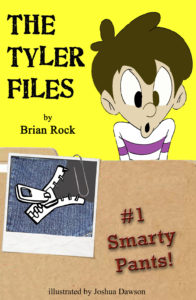Reaching Reluctant Readers
As a former teacher and current parent, I’ve had some experience in introducing kids to reading. And while there’s no magic potion that works for all kids, I’ve learned that oftentimes the messenger is as important as the message. Even reluctant readers will warm up to the task at hand when they see that someone else is actually enjoying it. So, when encouraging youngsters to read, remember to make it fun – for both of you! Here are a few suggestions:
Step out of routines:
Make special times to read. Don’t save reading time for just before bedtime, or it can become just another rote exercise like brushing teeth and washing up. You can have a reading night where you turn off the TV and let everyone pick a favorite book to read for thirty minutes or longer. For younger readers, you can create special snuggle-read time on weekends or after preschool.
Remember to take time after reading to discuss the book your child has read (or listened to someone else read.) Let them voice their opinions about what they liked best in a story. Even if they focus on illustrations, let them know that you value their insights about books. This discussion time is especially important because it lets even pre-readers feel like they’re part of the reading process.
Likewise, in the classroom, elevate reading from an assignment to an experience. A great way to do this is to find short, funny poems that you can read in under a minute, and read them to introduce a related class lesson. Shel Silverstein and Kenn Nesbitt are two great authors to begin with.
Lights, camera, read!:
Don’t just read a book, act it out. Without donning makeup and costume, you can bring characters to life with just a bit of inflection. Is the character sad? Use your saddest, poutiest tone to convey that emotion. Is the character happy? Unless you’re in a library, let your child feel the character’s joy through your own exuberance and RAISED VOICE. Is there more than one main character? Use different voices for each character. In my picture book, The Deductive Detective, I create fourteen unique voices to bring the story to life and give each character its own distinct personality.
Is your child already starting to read? Let them read the text for one character and you read the text for the other. Some great books for together reading are The Duckling Gets a Cookie?!?, Green Eggs and Ham, and You Read To Me, I’ll Read To You. For older, elementary school age readers, look for books with lots of dialogue. Tom Angleberger, Kate DiCamilla, Chirs Grabenstein are great authors for compelling characters and dialogue.
Celebrate books:
Make trips to the library or bookstore special occasions instead of errands. Let your kids see other children enjoying books. Let them linger, browse and choose their own books. It’s a special feeling when one book out of hundreds on the shelf “speaks to you.” Kids have so little autonomy in their lives, let them enjoy this one freedom of choosing their own book and it will make reading that much more special for them.
For teachers, try offering several books that you’ve pre-selected for a specific lesson and let the class vote, or even better, let individual students (especially the reluctant readers) take turns voting for which book to read. That small, simple action gives them reason to be invested in the book.
Get serious about reading with series:
Most reluctant readers don’t have favorite books, they have favorite characters. That’s why most book series are character driven. Once young readers make a connection with a character, the effort to make sense of language and understand plot becomes less intimidating, because they are in the company of a friendly character with whom they relate. In each subsequent book in the series, the characters, setting and premise are familiar, so understanding those elements takes less effort. With each book, the process gets easier and more enjoyable. In my chapter book series, The Tyler Files, for example, readers will find the same characters, with the same mannerisms, in the same school setting. The only change is a new source of mystery in each book, but because readers are familiar with the characters and premise, it’s easier to dive right in and get to the heart of the story.
For the very young, you can’t beat Dr. Seuss and Mo Willems. For chapter book readers, Mary Pope Osbourne and Jim Benton have wonderfully engaging series.
Make “em laugh, make ‘em laugh, make ‘em laugh!:
But by far, the best way to hook reluctant readers is to hit them in the funny bone. According to the Kids & Family Reading Report, 70% of kids want to read a book that will make them laugh and 54% want books that allow them to use their imagination. That’s why I make sure all the books I write are 70% funny and 54% creative!
For a child that sees the written page as a chore akin to taking out the trash, an unexpected burst of laughter can change their whole perspective. I know many teachers feel it’s their duty to be “serious” about reading, but getting kids seriously into reading is more important than boring them to death with serious lessons. There will be plenty of time for serious lessons later, but if you don’t hook a reader in elementary school, you never will. And study after study has shown that kids respond best to books that make them laugh – even if their sense of humor is worlds apart from your own.
For funny picture books, I recommend Mar Barnett, Doreen Cronin, and Jon Scieszka. For comical chapter books, check out Dav Pilkey and Herman Parish.
About the Book: Tyler has a big problem. His pants won’t stop talking! How will he make it through the day without becoming the school laughingstock? And how will Tyler survive his pants’ “off the cuff” remarks to the school bully (and to his secret crush?) With a little help from his best friend, Tyler gives a first-hand account of the mysterious, improbable and occasionally funny events that are so strange they can only be found in THE TYLER FILES.
In addition, THE TYLER FILES breaks new ground in the chapter book genre by adding interactive backmatter to the end of the story. Tyler poses questions to stimulate creative thinking in readers. He introduces and give examples of idioms related to the story. He gives 10 fun facts about pants, and even tells some jokes!
About the Author: Brian Rock’s latest PB was MARTIAN MUSTACHE MISCHIEF (First Light Publishing, 2015.) His previous PB, THE DEDUCTIVE DETECTIVE, (Arbordale, 2013) was a featured title of the month by the Children’s Book Council (Feb 2013.) His additional PBs include WITH ALL MY HEART (Tiger Tales, 2012) and DON’T PLAY WITH YOUR FOOD! (First Light Publishing, 2005.) Children’s Poet Laureate, Kenn Nesbitt included one of Brian’s poems in his anthology of poetry, ONE MINUTE TILL BEDTIME (Little Brown, 2016.) Brian received his master’s degree in Children’s Literature/Creative Writing from Hollins University. His poems for children have appeared in Highlights for Children, Poetry Train, and various regional publications. He is a former teacher who taught at-risk students for six years, and he is a member of SCBWI.
The Tyler Files looks like the perfect book to use to reach a reluctant reader! Thank you for the post, Brian!




Hey Kellee & Ricki,
Thanks so much for sharing my post with your readers!
I hope I was able to share some effective strategies for reaching those young book-aphobes!